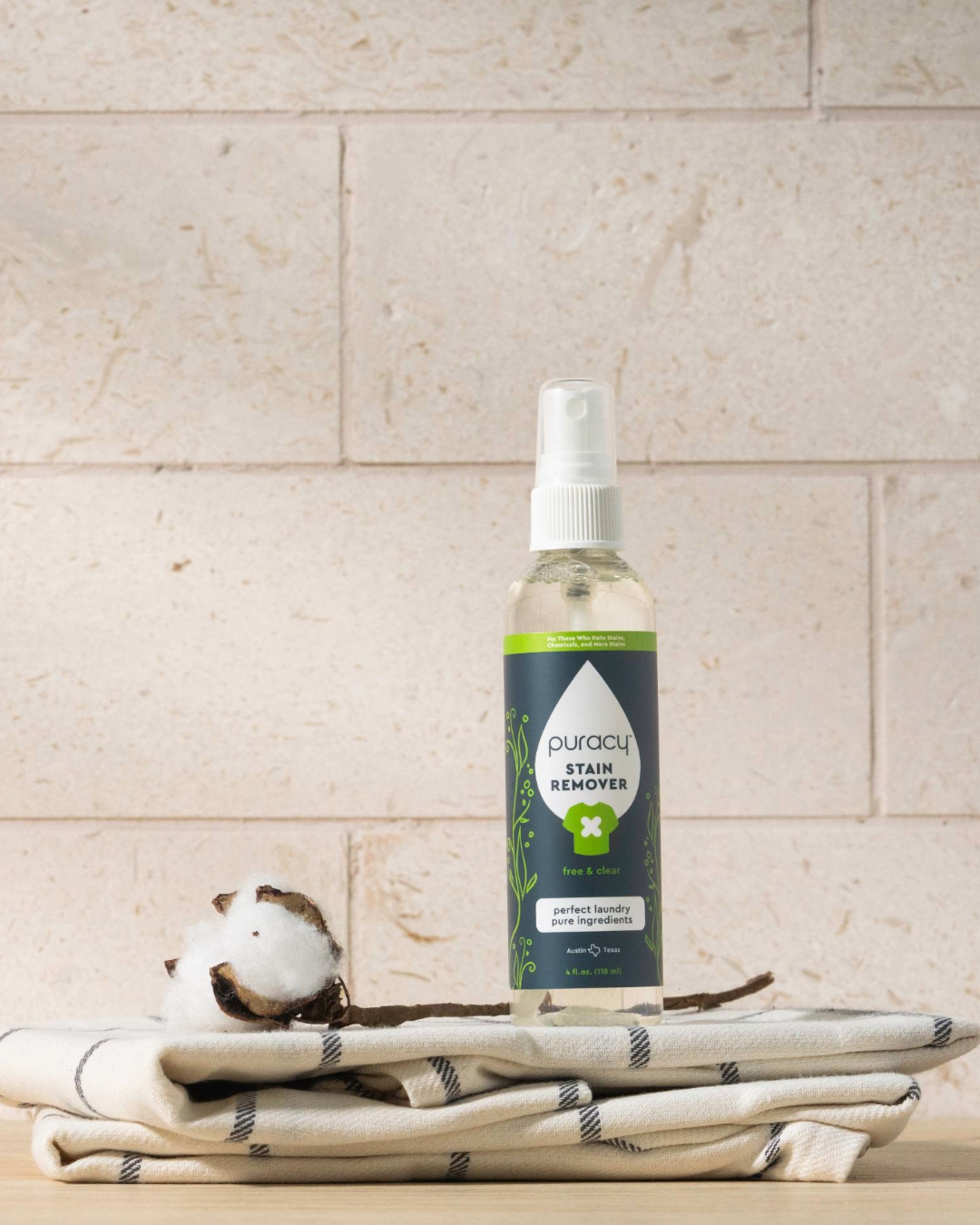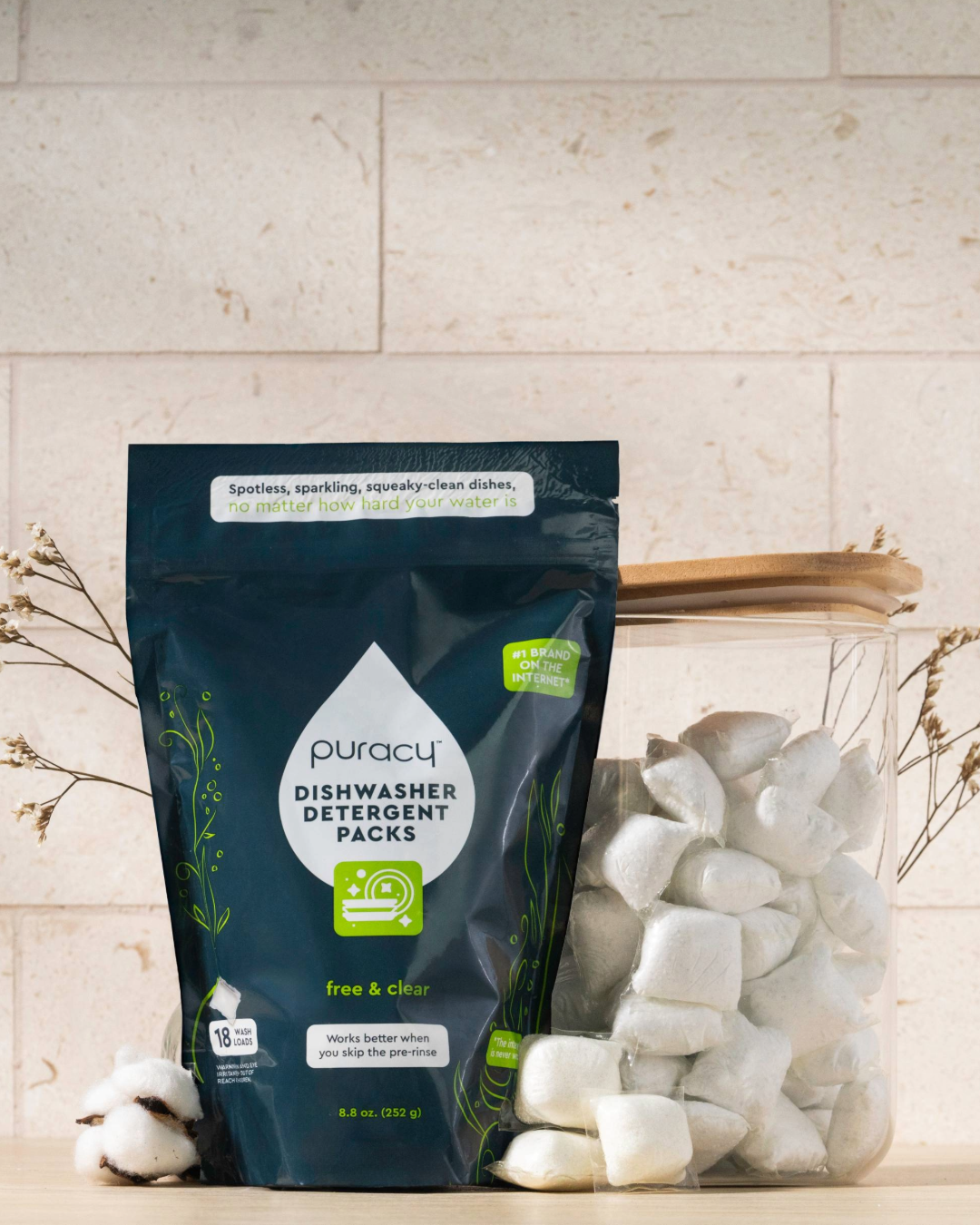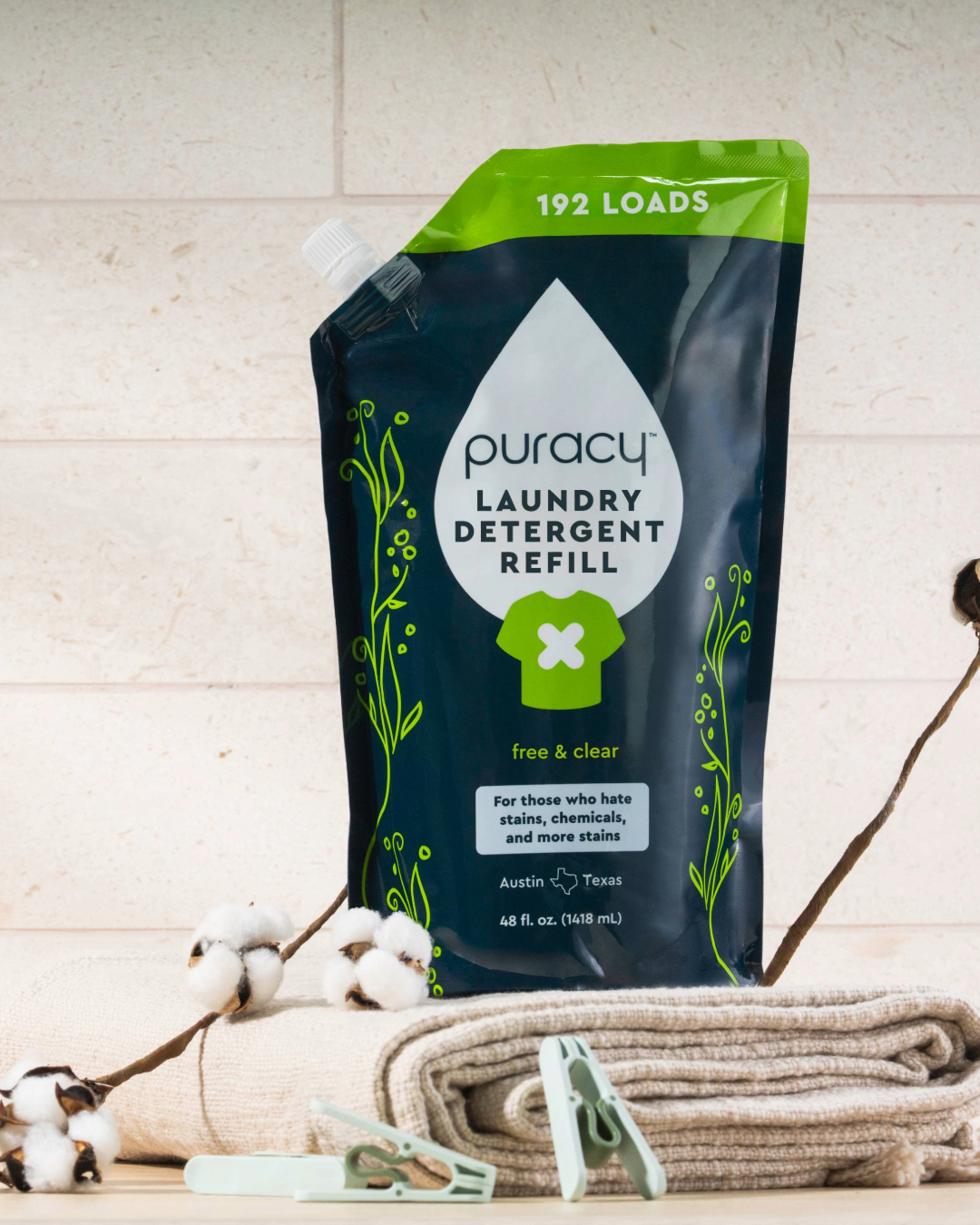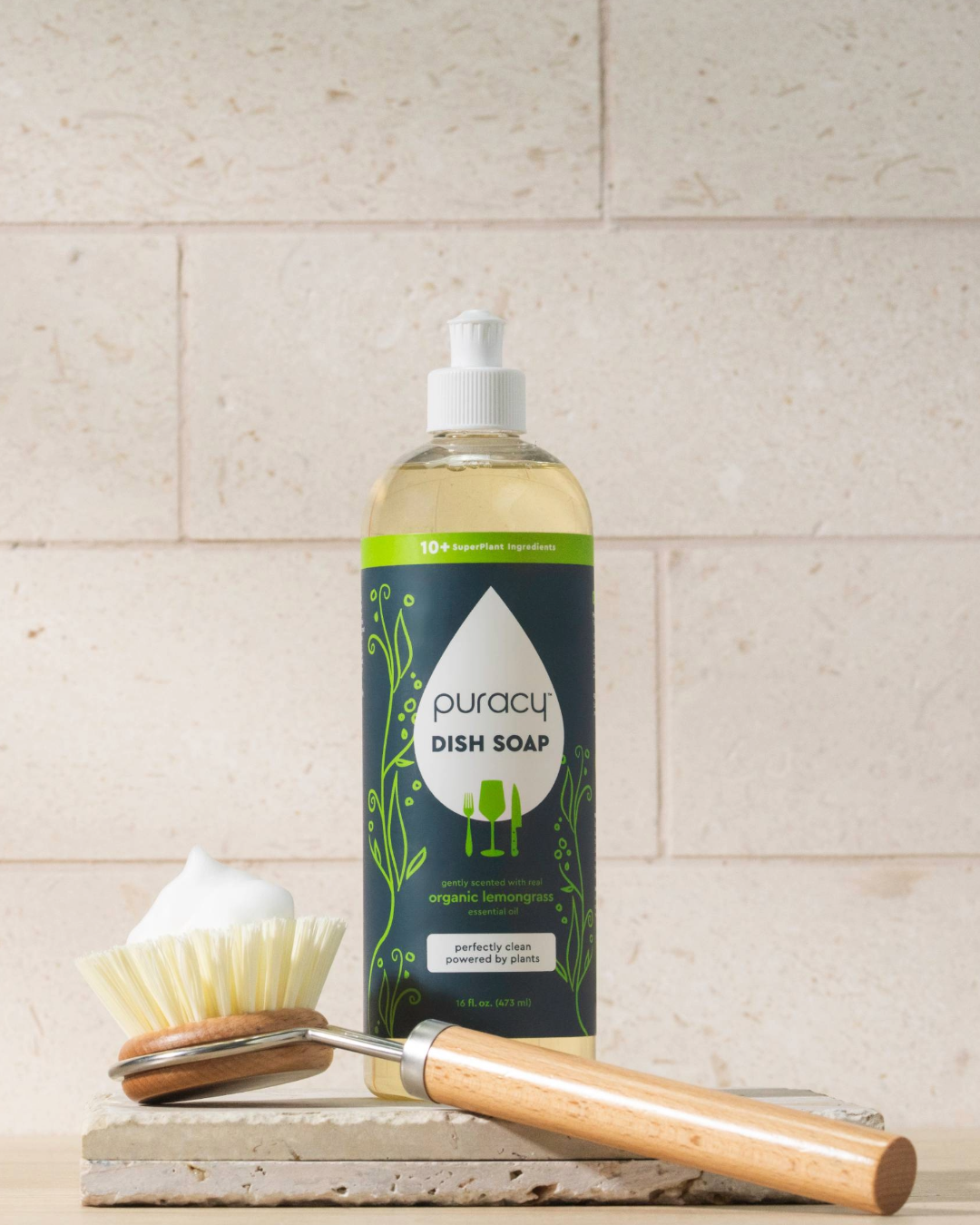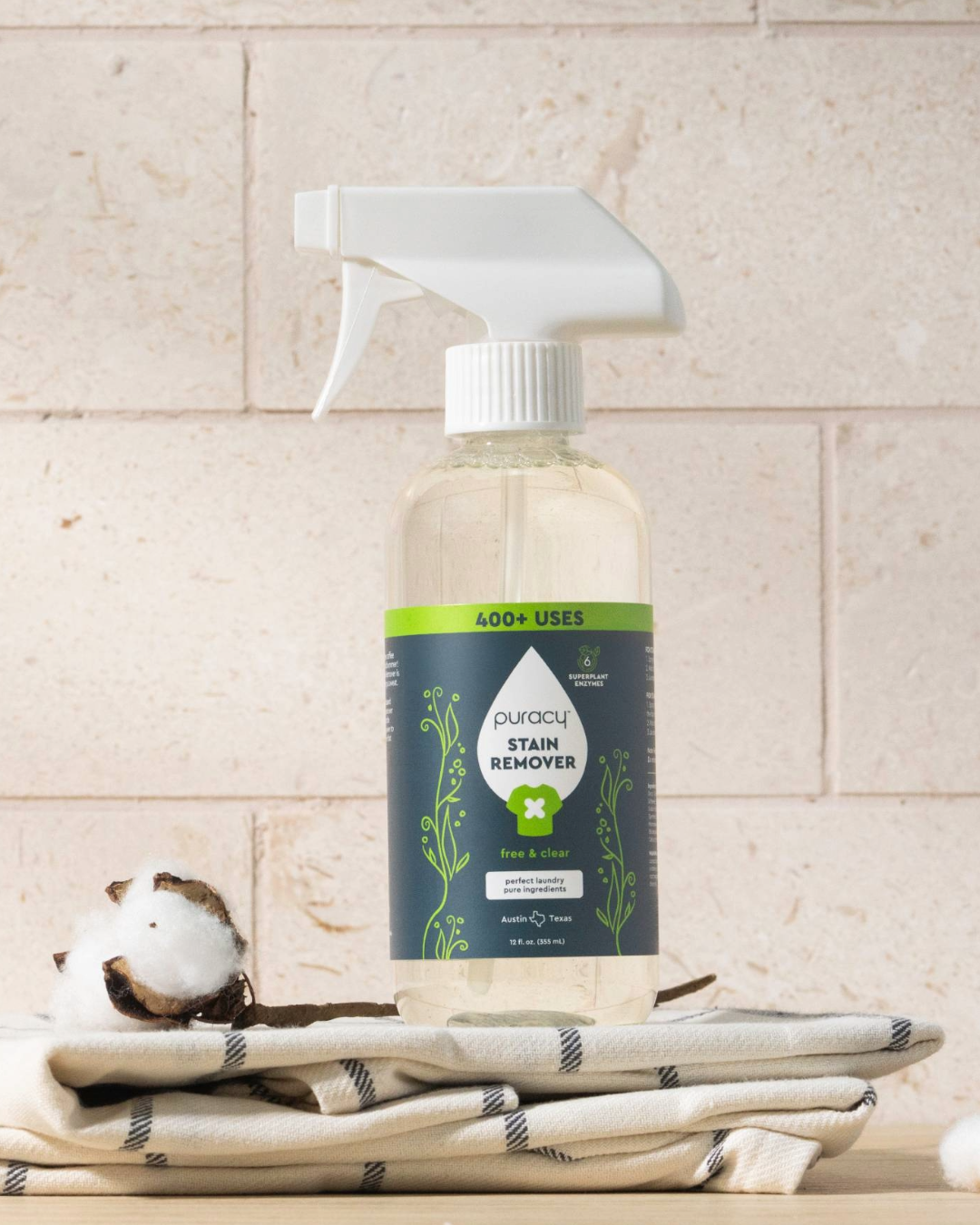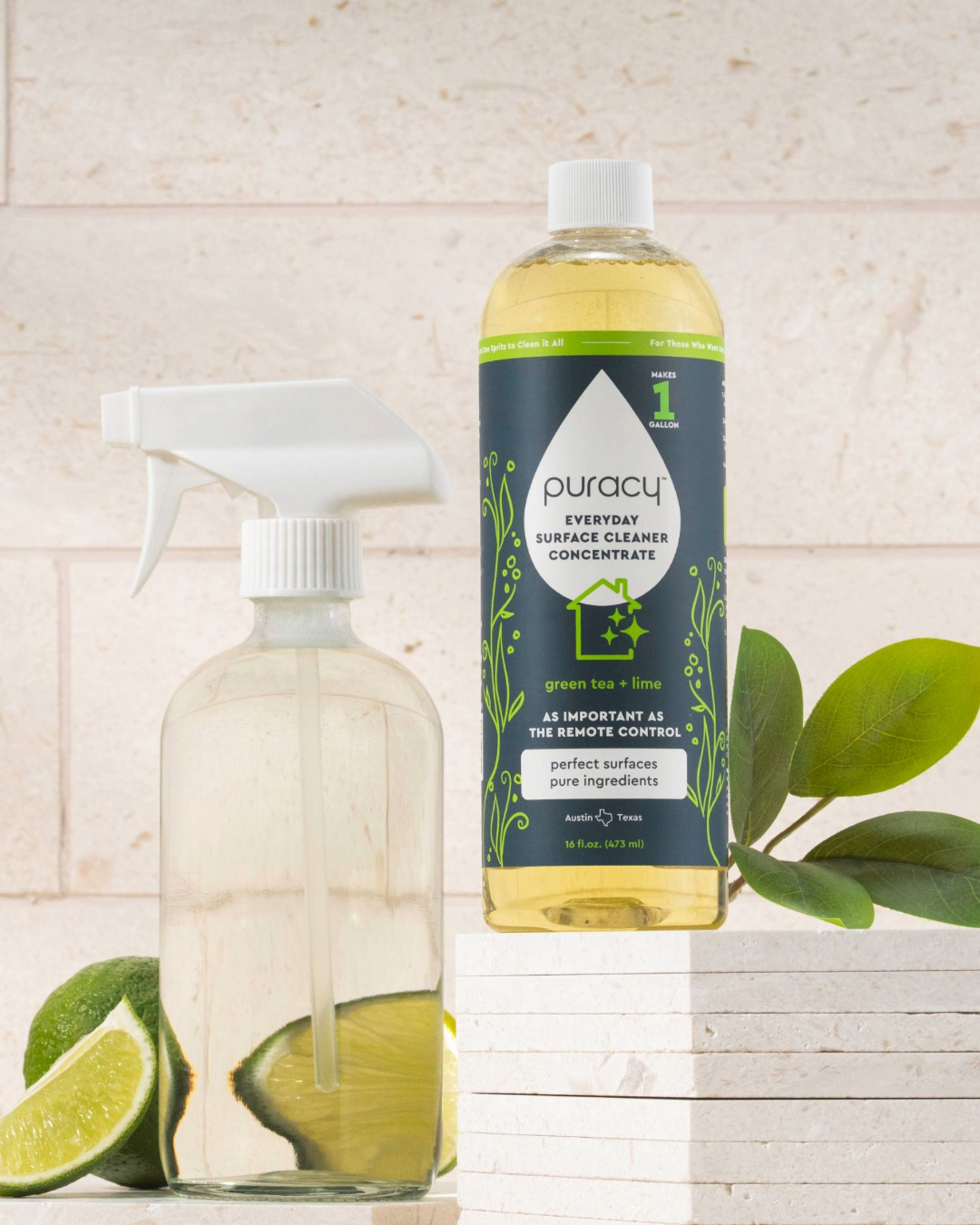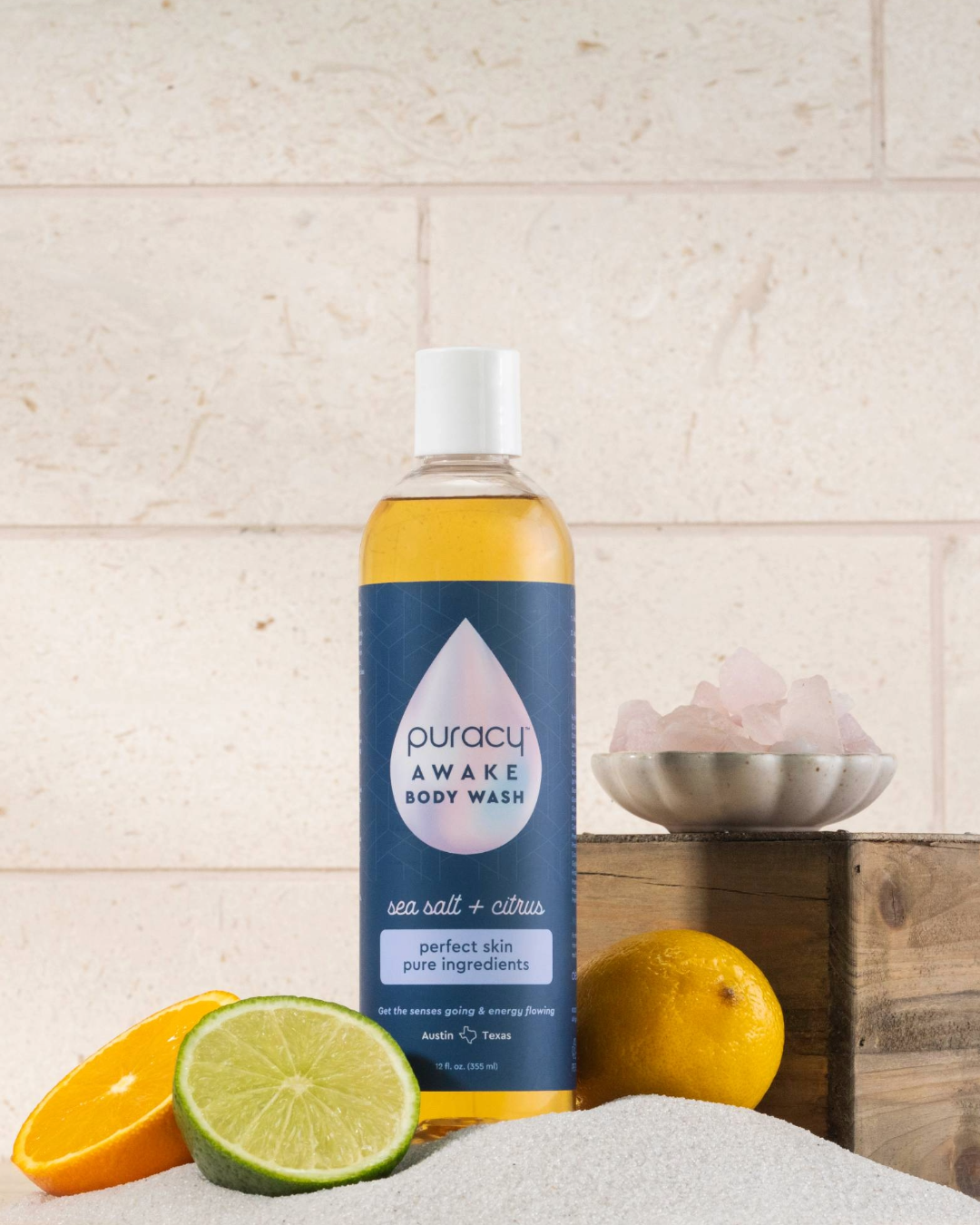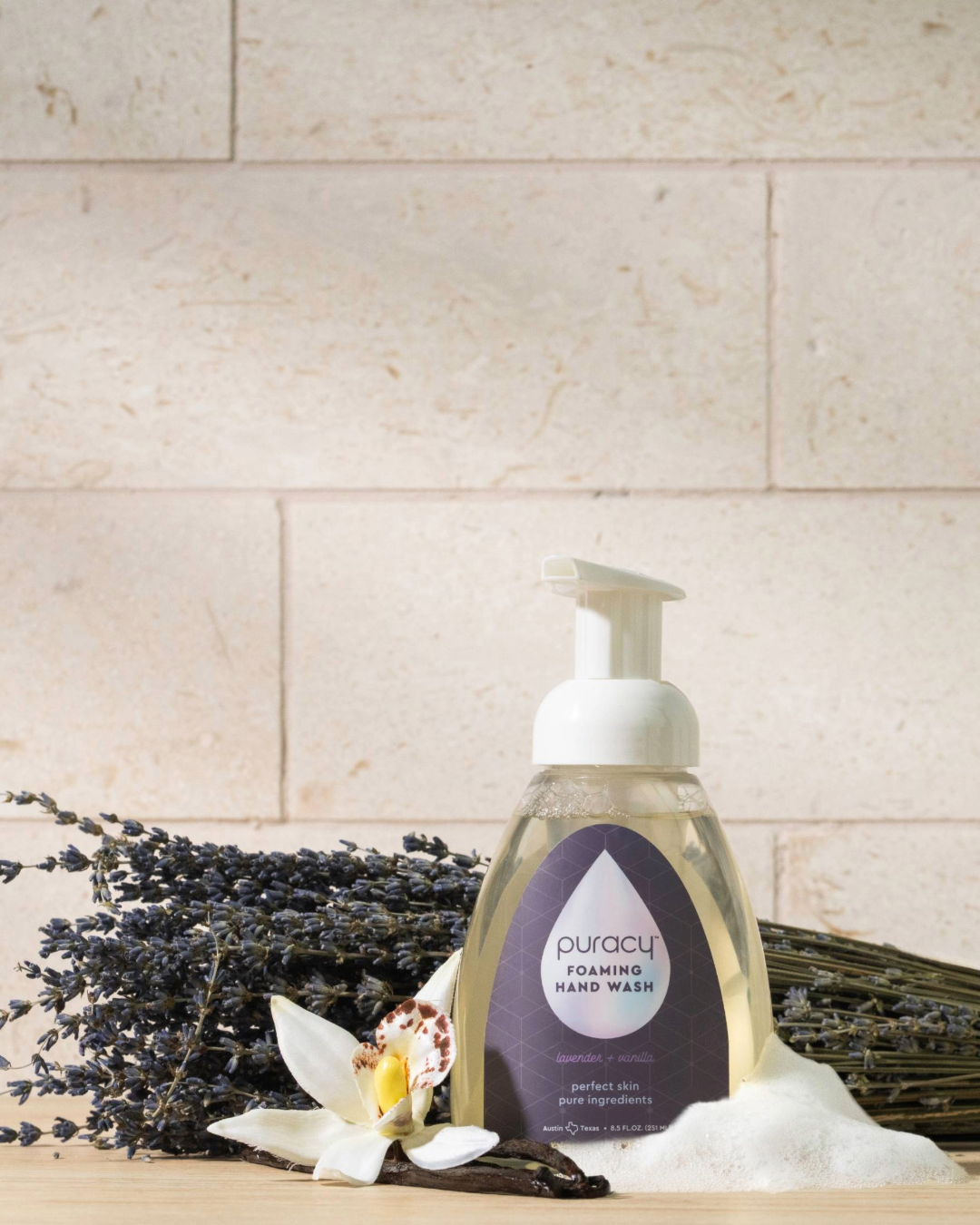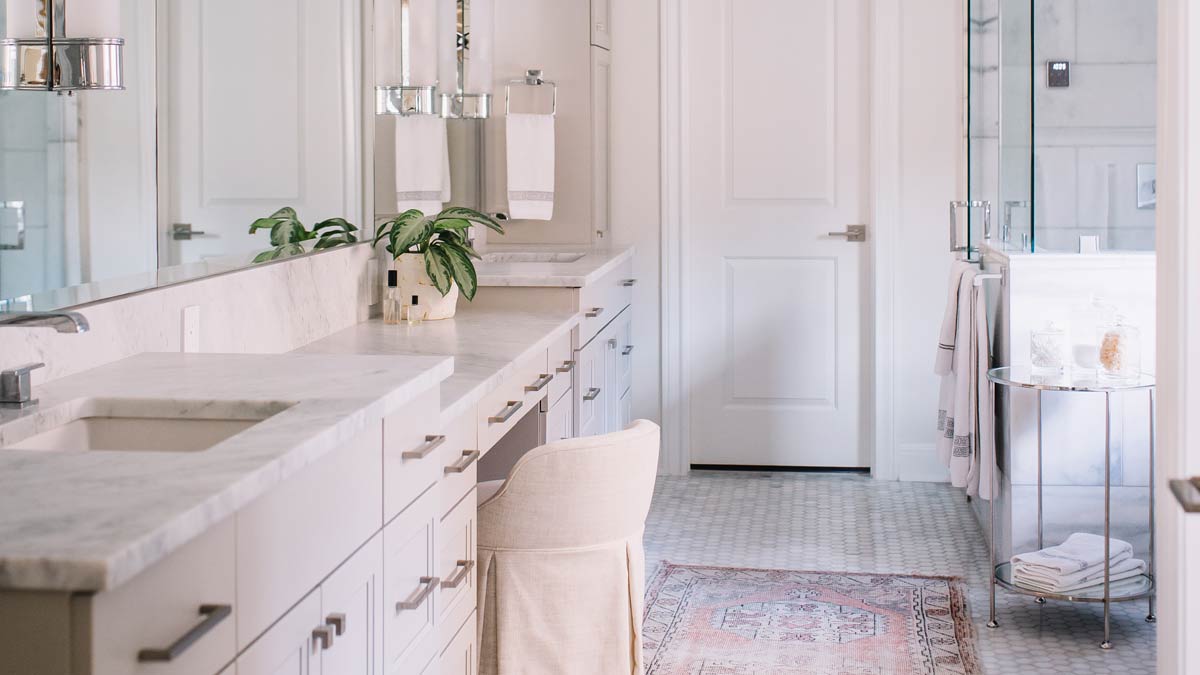
Cleaning 101: The Natural Way to Clean a Tub
If you're not scrubbing your bathtub regularly, you might be sharing your bath with uninvited guests like dead skin cells, soap scum, bacteria, fungus, and yeast.
You don't need to break out the caustic ingredients: With a natural tub cleaner – and eight easy methods – you can keep things squeaky clean!
Bathroom Cleaning Supplies:
- Baking Soda
- White Vinegar
- Microfiber Cloths
- Natural Surface Cleaner
- Cleaning Brush
- Sponge
- Natural Stain Remover
Steps for Cleaning Your Tub:

1. Take Everything Out of the Tub
Before you start cleaning, remove all toys, products, washcloths, and caddies (you can clean those later). Recycle empty product containers, wash/replace washcloths, and toss out small bits of soap.
2. Wipe Down & Clean Walls
Using your showerhead or a bucket full of warm water, remove any visible dirt and hair. Combine a small amount of water and baking soda until it forms a paste. Apply it to walls and tiles and spray with distilled white vinegar to clean. You can also use our Natural Surface Cleaner, then wipe them down with a clean, dry microfiber cloth.
Steps for Mixing Water and Baking Soda Paste:
- Mix 1/2 cup of baking soda with 1/4 cup of white vinegar.
- Adjust as needed for consistency; the mixture should be thick enough to stick to tub surfaces.
- Let it sit for 15 minutes, then clean off and rinse.
Pro tip: Vinegar is a great natural cleaner for tubs because its acidity helps dissolve soap scum, mineral deposits, and grime. It also has antibacterial properties, making it effective at disinfecting, while leaving your bathroom free of harsh chemical residues.
3. Clean Grout
Apply the baking soda and water paste, plus distilled white vinegar spray to grout. Once it stops foaming, scrub it with a brush and rinse with water. While scrubbing grout, pay extra attention to especially grimy areas (e.g. corners) where water tends to pool.
Steps for Mixing Water and White Vinegar Paste:
- Mix one part white vinegar with one part water.
- Use 1 cup of vinegar and 1 cup of water.
- This 1:1 ratio works well for disinfecting surfaces, removing odors, and breaking down grime.
Pro tip: Baking soda is an excellent natural cleaner for tubs due to its mild abrasiveness, which helps remove stains and soap scum without scratching surfaces. Its alkaline nature neutralizes odors and dissolves grime, making it safe for household use and the environment.
4. Check the Drain
If it takes a while for the water to drain after showers or baths, there's probably a clog. And it's probably hair (gross!). Unscrew the plug then remove any clumps. If it's deeper down, try using a deconstructed wire hanger to pull it out.
Pro Tip: Pour ½ cup of baking soda and ½ cup of white vinegar as a natural drain cleaner down the drain. Run hot water for a few minutes to break up clogs.
5. Start Scrubbing
Spray the bathtub with your multi-surface cleaner and let it sit for 1-2 minutes. Working from top-to-bottom, wipe it down with your microfiber cloth or use soft sponge. Finish up by rinsing remaining residue with the showerhead or a clean bucket of water.
6. Tackle Build-up
Now it’s time to focus on any stubborn stains like soap build-up, hard water stains, dirt, mold, and bottle rings (which may require a bit more elbow grease) with your baking soda and vinegar paste. You can also spray them with Puracy Natural Stain Remover and leave it for at least 15 minutes. Clean with a paintbrush or toothbrush, then rinse away any loosened grime.
Pro Tip: Use auto detailing brushes for cleaning grout and loosening tough stains.
7. Make It Shine
Once the scrubbing is out of the way, give your tub a final dry and shine. Even a few swipes with a clean microfiber cloth should leave your bathtub clean, bright, and ready for use.
8. Clean Items Before Putting them Back
Bacteria in your shower is definitely hanging out on your shower items. Be sure to wipe down bottles before putting them back.
To clean children’s tub toys, you can use natural dish soap, equal parts vinegar and water, or toss them on the top shelf of the dishwasher (make sure they’re heat-safe!). To inhibit mold growth, let them air dry afterwards.
Pro tip: When’s the last time you replaced your loofah? Throw them in the dishwasher every week and replace them every month. Or just switch to a washcloth.
9. Clean the Surrounding Areas of the Bathtub
While the bathtub is now clean, don’t forget to clean the surrounding areas like the curtain and surrounding walls. You can use a diluted white vinegar solution and spray it on the plastic curtain and the walls and let it sit for a few minutes before rinsing. Make sure the tub is spick and span by wiping it underneath, too!
How to Disinfect a Tub

Though it's considered the ultimate germ-fighter in bathrooms, there are plenty of reasons to avoid using bleach. You can disinfect a tub using baking soda and dish soap on tub surfaces.
- Rinse the tub with warm water to remove loose debris and soap scum.
- Make a cleaning paste using 1/2 cup baking soda and 1/4 cup white vinegar.
- Clean the tub with the paste, focusing on stains and buildup.
- Spray with hydrogen peroxide (3% solution) to disinfect or use our Natural Disinfectant.
- Rinse thoroughly with warm water and dry with a clean cloth.
However, if you do decide to clean your tub using bleach, follow the label carefully and adhere to proper safety and sanitation precautions.
Pro Tip: Just like vinegar, we don’t recommend this hydrogen peroxide disinfecting spray to be used on porous surfaces like soapstone, marble, and wood.
How Often Should I Clean a Bathtub?
If your home only has one bathroom or hard water, you might need to deep clean your bathtub every week. For tubs used less often (or in guest bathrooms), a monthly routine might suffice.
What To Avoid:
- Abrasive Cleaners: Steel wool or rough brushes can scratch and damage the tub’s surface, especially on enamel or acrylic finishes.
- Ammonia and Bleach Mixture: Combining these can release toxic fumes, which are hazardous to health.
- Undiluted Vinegar on Stone: Vinegar's acidity can etch and damage natural stone surfaces like marble or granite.
- Harsh Chemical Cleaners: These can corrode surfaces, harm finishes, and cause skin or respiratory irritation.
- Colored Cleaners: Dyes in cleaning products can stain light-colored or porous tub surfaces.
Frequently Asked Questions (FAQs)

Can I Clean a Bathtub With Vinegar?
Yes, you can clean your bathtub with vinegar if it’s made of acrylic and fiberglass.
The cleaning and disinfecting power of distilled white vinegar comes from the antifungal and antibacterial properties of acetic acid. This helps break down substances like mineral deposits, grease, wax buildup, and bacteria.
- Plug the drain and pour three cups of white vinegar into the tub.
- Fill the tub with water and let the solution soak for several hours.
- If your tub has jets, ensure the water level is at least three inches above them. Run for about 15 minutes then drain the tub.
- Wipe down the entire bathtub with a damp microfiber towel. Stains, soap residue, and mildew should come off far more easily.
Avoid using vinegar on marble bathtubs, showers, vanities, and tile (or any other semi-porous materials. Use our Natural Surface Cleaner instead!
How Can I Deep Clean My Bathtub Without Scrubbing?
Cleaning your bathtub without scrubbing is possible when the tub is regularly cleaned. For tubs with deep-seated issues, it may take several tries to see results.
- Create a one to one solution of vinegar and dish soap in a spray bottle. Spray this solution all over your tub and let it sit there for 15 to 30 minutes.
- Wipe the solution off the tub with a clean cloth.
- Repeat this process on a weekly basis to gently clean your tub.
Pro tip: Certain chemicals from your local supermarket can be too harsh for certain products like fiberglass, acrylic, and ceramic.
What Is the Best Way to Clean a Plastic Bath?
Plastic bathtubs are usually made of strong acrylic for durability and for daily use. The downside of using acrylic is that it can stain more easily than other materials like ceramic. You can clean your plastic bathtub with baking soda and dish soap solution for an easier cleaning hack.
- Add baking soda and dish soap to a small bowl. Mix until it forms a paste.
- Use gloves on your hands and use this paste to clean the surfaces with stains gently. You may also opt to use an old toothbrush for this process.
- Rinse well to avoid the soap from leaving scum and a slippery feel on the plastic.
If you have hard water at home, chances are, you also have ring stains and stain lines around the plastic tub due to the mineral deposits. It is also more delicate because it’s easily scratched if you use harsh materials to clean it.
Can Vinegar Work on Plastic Bathtubs?
Yes, you can use vinegar on your plastic tub. Dilute two parts vinegar with two parts water and use this to spray onto the tub. Let it sit for an hour before rinsing for best results.
What Is the Best and Fastest Way to Clean a Bathtub?
The best way to clean a tub is with baking soda, vinegar, dish soap or a disinfecting solution.
- Spread baking soda on the tub.
- Then spray a solution with one part vinegar, one part water, and dish soap or disinfecting solution.
- Let it sit for an hour before rinsing for best results.
Can Bleach Damage a Bathtub?
Bleach can damage your bathtub depending on the material of your tub. If there is no other cleaning solution available, make sure to dilute the bleach with water before using it. Do not use bleach if your bathtub is made of wood, acrylic, and copper.
How Do I Clean the Bathtub Drain?
Prepare a vinegar and baking soda mixture and pour it into the drain. Wait for 10 minutes to let the solution do its work. Then pour boiling water into the drain to flush out the gunk.
How Do I Remove Stains on the Bathtub Faucet?
Bathtub faucets are prone to hard water stains. The key is white distilled vinegar with water and dish soap solution. The stains will rub off easily.
What Is Causing the Stain on My Bathtub?
You can properly treat bathtub stains if you know the cause. Yellow stains are usually from soap and shampoo scum. A reddish or brownish stain is most probably caused by iron deposits from hard water. Black stains are usually molds.
Practical Tips: More Bathtub Cleaning Hacks

How to Prevent Tub Stains
Cleaning the bathroom is no one's idea of a fun afternoon, but you can make the process much easier by preventing bathtub stains before they happen.
Invest in a Better Water Softener
Water softeners help reduce hard water stains, but did you know they make soap lather better? That means less time spent cleaning and less money spent on personal care products.
Take a Shower Before Bathing
Just like you'd rinse off before getting in a pool, taking a quick shower can help keep oil and dirt from sticking to your tub. And when you’ve finished bathing, rinse the tub with fresh water.
Choose Higher-Quality Personal Care Products
All of Puracy's biodegradable, plant-based personal care products are formulated to leave zero residues behind. This limits the amount of scouring in your cleaning routine.
The Best Cleaner for Tubs – and the Entire Home

You don’t need a bucket full of products to clean a tub. Our Natural Surface Cleaner provides everything you need to tackle literally every non-porous surface in your entire home! No caustics, no fumes, and grime left behind!

